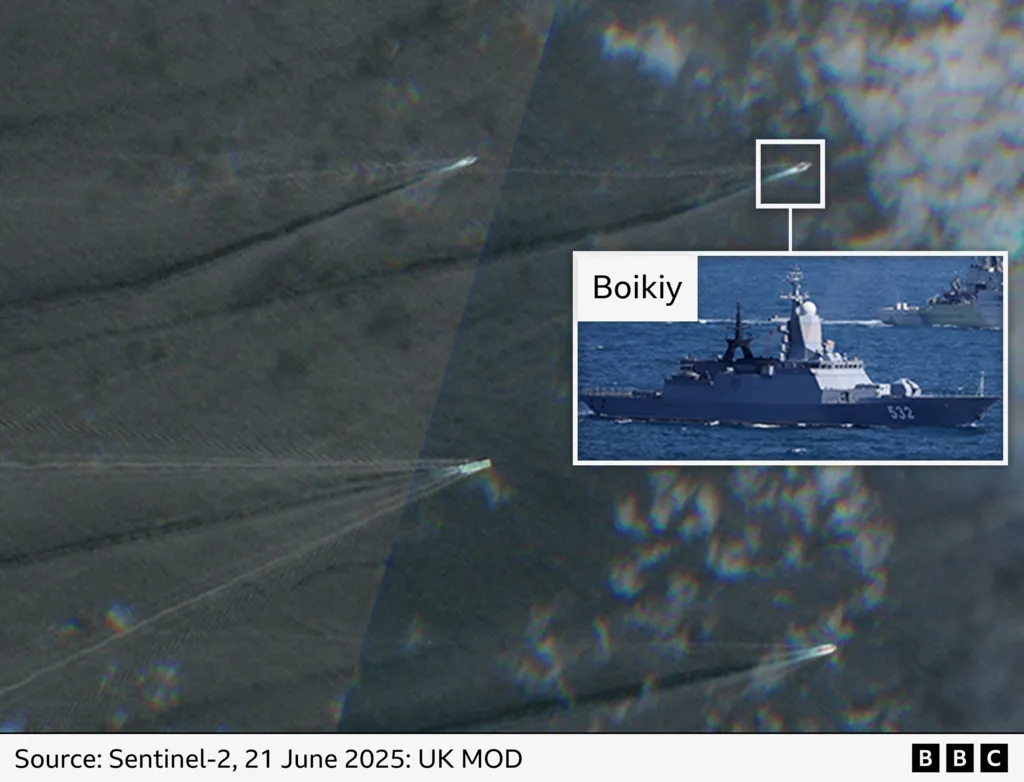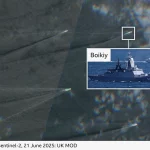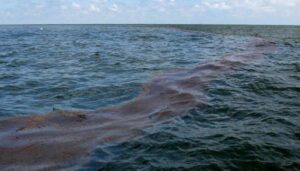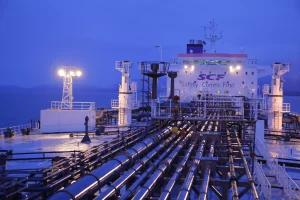Russian warship ‘disguised’ while escorting shadow fleet tankers

A Russian warship disguised itself using a fake AIS while passing through the English Channel with two sanctioned tankers.
According to a BBC Verify investigation.
The guided missile corvette Boykiy broadcast a fake identification code while passing through the English Channel on Saturday, June 21. It was mistakenly listed on tracking resources as a vessel previously using the same identifier. BBC Verify matched the identifier to Boykiy using satellite imagery, tracking data and video of it passing under a bridge in Denmark.

It was travelling with two vessels known to be part of Russia’s “shadow fleet.” BBC Verify has contacted the Russian embassy in London for comment. But experts told the publication that recent Western actions against the “shadow fleet” could prompt Moscow to use its military to protect the tankers.
Last month, a Russian Su-35 fighter jet flew near a “shadow fleet” vessel and entered Estonian airspace after the country tried to intercept a vessel suspected of transporting sanctioned oil.
The “Boyka” was first noticed on social media by independent open-source intelligence analyst Christian Panton on the social network Bluesky.
The ship is known to have left West Africa in June, where it was participating in a “diplomatic mission.” Photos posted online show the ship moored in the Guinean capital, Conakry. The corvette left port without turning on its automatic identification system (AIS). All ships are expected to transmit the signal, although military vessels often sail without one.
However, a vessel carrying the common identification number 400000000 – a code sometimes used by ships that want to alert others to their presence for security reasons without identifying themselves – was briefly spotted near the Canary Islands.
The location matches the time it would have taken the Boyko to travel the 200km from Conakry. Satellite images reviewed by BBC Verify show the vessel to be 100 metres long, matching the Boyko’s size and distinguishing it from other ships that have used the identifier.
Frederik Van Lokeren, an analyst and former lieutenant in the Belgian navy, said the vessel’s actions were unusual for a Russian warship.
“Usually, if the Russians want to remain secret, they just turn off their AIS signal,” he said. “So masquerading as something else… is a very, very rare occurrence.”
The Boykoy was later joined by two oil tankers, the Sierra and the Naxos, which were travelling from India through the Suez Canal and the Mediterranean. Both vessels were subject to UK sanctions.
All three vessels met in the English Channel on 20 June. Here the Russian warship reappeared on radar and optical satellite imagery, allowing the BBC to confirm once again that it was the same size and shape as the Boykoy.
The Naxos reached the English Channel several days earlier than the other vessels and waited for the warship before entering the channel.
A source at the UK Ministry of Defence confirmed to BBC Verify that the Royal Navy had been following the Boykoy as it passed through the strait.
Satellite images reviewed by BBC Verify show a ship following the Boyki as it passed through the strait, but the BBC cannot confirm that it is a Royal Navy ship.
All three vessels headed for the Baltic Sea, where the Boyki – still under a fake AIS marker – passed under the Great Belt Bridge in Denmark. The camera footage clearly showed the vessel as a warship for the first time.
It is not known where the vessels are headed, although all three are continuing their journey through the Baltic Sea and may be heading towards ports in mainland Russia or Kaliningrad, an exclave between Poland and Lithuania.
It is worth recalling that this is the first time a Russian warship has publicly escorted tankers from the “shadow fleet” that circumvents sanctions as they pass through the English Channel.





